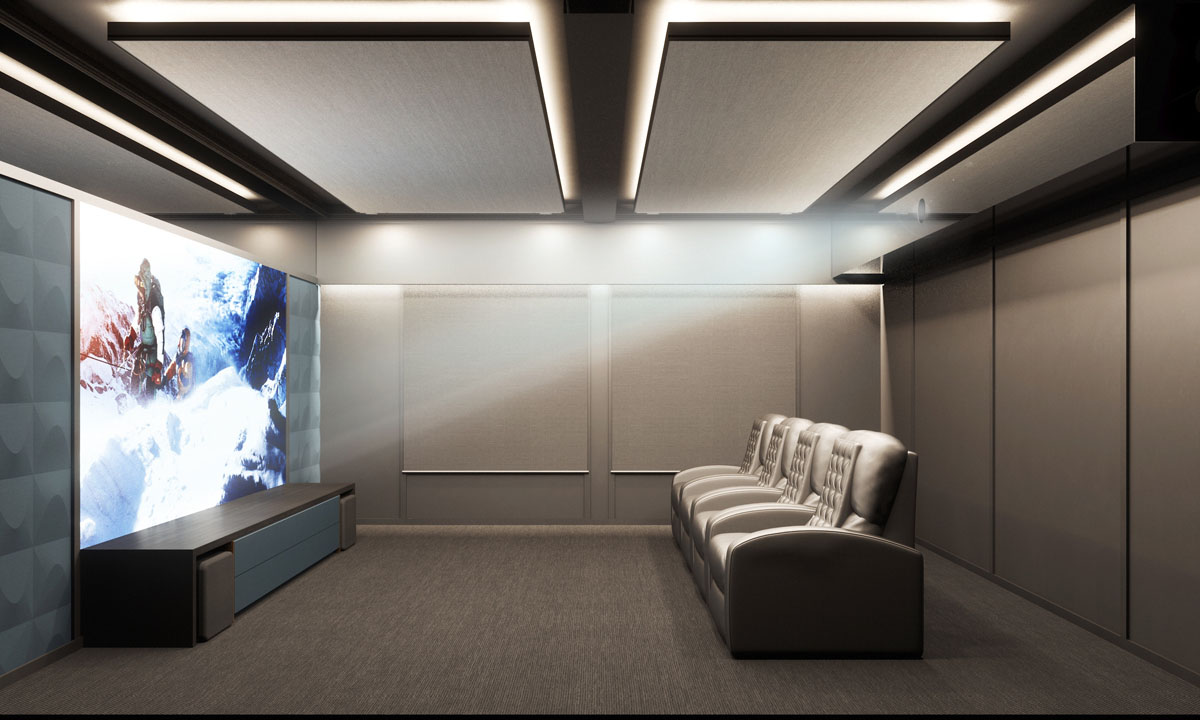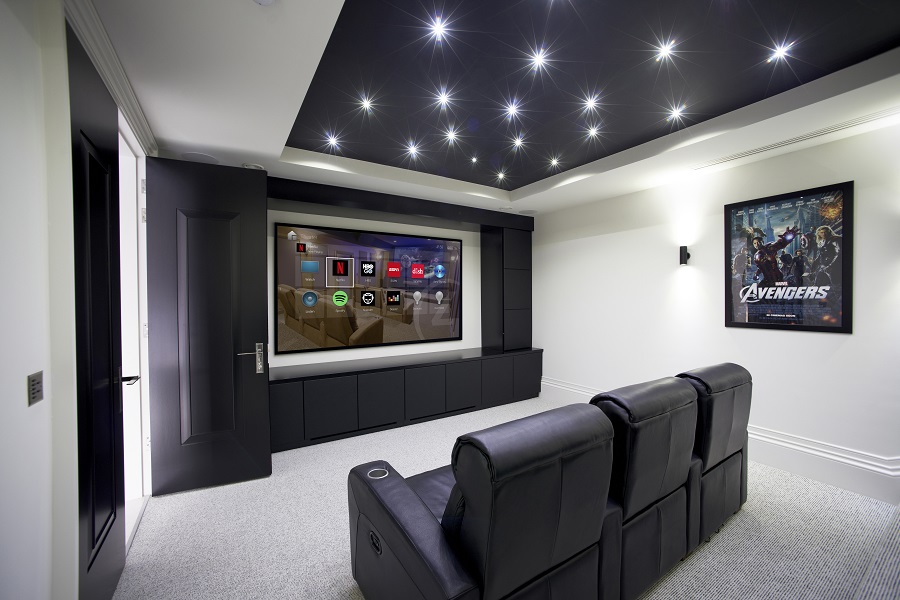Key Reasons to Choose Home Theater Tampa for Your Next Project
Key Reasons to Choose Home Theater Tampa for Your Next Project
Blog Article
Home Theater 101: Whatever You Required to Know for a Cinematic Experience in your home
Creating a home theater that rivals the cinematic experience of a commercial theatre entails careful consideration of several parts, consisting of screen option, audio systems, and space design. Whether you are pondering the excellent display size or the complexities of border audio, understanding these fundamentals is crucial.
Picking the Right Screen
When establishing up a home movie theater, selecting the ideal screen can make or break the viewing experience - tampa home theater. The display acts as the centerpiece of your setup, influencing image top quality, watching angles, and total aesthetic. Key variables to consider consist of screen size, resolution, and kind
First, identify the appropriate screen dimension based on your room measurements and seating distance. Next off, pick in between numerous display kinds, such as fixed-frame, mechanized, or retractable screens, each offering distinctive advantages.
Resolution is an additional important factor. For an absolutely immersive experience, think about a screen made for 4K or even 8K material, ensuring sharpness and clearness. In addition, take into consideration the display's gain, which impacts illumination and comparison; a higher gain can boost brightness in well-lit areas, while a lower gain might be preferable for darker environments.
Picking Audio Equipment
Audio equipment is an essential part of any home cinema system, substantially enhancing the general viewing experience. The option of audio gear can figure out the deepness, quality, and immersion of audio, crucial for creating a motion picture atmosphere.
When selecting audio equipment, consider a surround sound system, which generally includes a receiver, several speakers, and a subwoofer. A 5.1 or 7.1 network system is suggested, where the first number represents the speakers and the second the speaker, offering an immersive soundscape. The receiver is the heart of the system, handling sound and video clip signals, and should support modern-day layouts like Dolby Atmos for an enhanced spatial experience.
Quality audio speakers are vital; seek versions that supply a well balanced sound account with good bass action. Floor-standing speakers can generate richer audio, while shelf alternatives save space. Additionally, take into consideration wireless options for ease of installation, although wired systems usually supply remarkable performance.

Optimum Seating Arrangements
Developing an optimal home movie theater experience pivots significantly on optimal seating plans. The arrangement of seats plays an important duty in both convenience and seeing quality, directly impacting the overall cinematic experience.
First, take into consideration the display size and checking out range. A typical standard is to position seats at a range about 1.5 to 2.5 times the angled dimension of the display. This guarantees an immersive experience without stressing the eyes.
Following, altitude is important. If your seating is in a tiered layout, the back rows should be greater than the front to avoid obstructions. For level seating, guarantee that the front row is not as well close to the display, which everybody has a clear view.
In addition, take into consideration the setup in regards to social dynamics. Group seating can improve the common experience, while specific seats may be favored for individual watching.

Finally, prioritize comfort with ergonomic seats that supports extensive watching durations. Incorporating reclining chairs or supported seats can dramatically boost the experience, making the home cinema a preferred location for both entertainment and relaxation.
Lighting and Setting
Effective lighting and ambiance are vital parts of a properly designed home movie theater, as they significantly influence the watching experience. The right lights can boost the cinematic feeling, while inadequate options can interfere with it. For optimal outcomes, take into consideration a layered lighting technique that consists of ambient, job, and accent lighting.
Ambient lighting gives general illumination, ensuring that the area is not completely dark, which can strain the eyes. Dimmer switches are highly advised, permitting for modifications based upon the content being watched. Job illumination, such as wall sconces or flooring lights, uses useful sites illumination for tasks like reading or navigating the room without interrupting the total atmosphere.
Accent lights can be used to highlight building attributes webpage or produce focal points, including depth and interest to the space. LED strip lights behind screens or along shelves can provide a subtle radiance that boosts the visual experience without frustrating the customer.

Wiring and Installation Tips
A tactical electrical wiring setup is crucial for achieving optimum performance in your house theater system. Appropriate circuitry not just makes sure high-grade audio and video signals yet additionally improves the overall aesthetic of your room. Begin by drawing up your design, identifying where each element will be positioned, including your screen, speakers, and receiver.
When picking cables, focus on top notch, suitably gauged wiring to lower signal loss. HDMI cords must be utilized for video links, while audio speaker cord need to match the specs of your speakers and amplifier. Go with in-wall rated cables to adhere to security standards and maintain a clean look.

Conclusion
In recap, creating a remarkable home cinema experience requires mindful factor to consider of numerous aspects, including display option, audio equipment, seating arrangements, lights, and electrical wiring. By focusing on these aspects, a cinematic atmosphere can be efficiently replicated, allowing for immersive viewing experiences that measure up to traditional cinema settings.
Creating a home theater that matches the motion picture experience of a commercial theatre entails careful consideration of multiple elements, including display option, audio systems, and room layout.When setting up a home movie theater, selecting the right display can make or break the Get More Info seeing experience. Next off, select between numerous display kinds, such as fixed-frame, mechanized, or retracting screens, each offering distinctive advantages. For a truly immersive experience, take into consideration a display made for 4K or also 8K content, making sure intensity and clearness.In summary, producing an exceptional home cinema experience calls for mindful factor to consider of different aspects, including display selection, audio tools, seating arrangements, illumination, and wiring.
Report this page